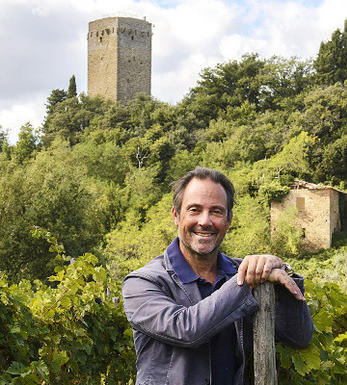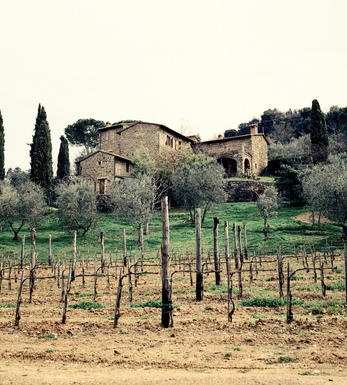
About this WINE

Fattoria Petrolo Galatrona
Petrolo are based in the Val d’Arno in northern Tuscany and since the 1980s have produced a range of wines from Sangiovese, Cabernet Sauvignon, Merlot, Malvasia and Trebbiano Toscano, but it’s with Merlot that they have found most success. This is an historic wine growing area and can trace its history back to the early 18th century, while French grape varieties have been used alongside the native Sangiovese here since the early 19th century. In the 1940s, the Petrolo estate was bought by the Bazocchi family and is now owned by Luca Sanjust, a former painter.
Petrolo’s vineyards extend across 31ha of which 26ha are in production. With an altitude between 250 and 450 meters above sea level, the vineyards grow over moderately loose-packed soil with rocky stratifications of limestone, sand, claystone and flakes of shale typical of the Chianti area.
The Galatrona vineyard extends for just 3ha and was planted in 1990. Galatrona is the first Merlot vineyard that Petrolo planted. The wine is named after the medieval tower that overlooks the Petrolo estate. It was first produced in 1994, when a late picked parcel of Merlot was kept separate and bottled as a single varietal.

IGT Tuscany
IGT (Indicazione Geografica Tipica) Tuscany is a wine classification from Italy's Tuscany region. It is one of the official wine classifications recognized by the Italian government. IGT is a step below the highest classification, DOCG (Denominazione di Origine Controllata e Garantita), and above the DOC (Denominazione di Origine Controllata) level.
The IGT classification was introduced in 1992 to allow winemakers more flexibility in grape varieties and employ winemaking techniques while still ensuring a certain level of quality and geographical indication. This classification gives winemakers more freedom to experiment and innovate, deviating from the strict regulations of the DOC and DOCG classifications.
IGT Tuscany wines can be produced throughout the entire region of Tuscany, encompassing various sub-regions and terroirs within the area. This classification allows winemakers to use traditional Tuscan grape varieties, such as Sangiovese, and non-traditional grape varieties, including international ones like Cabernet Sauvignon, Merlot, Syrah, and others.
The IGT Tuscany classification gives winemakers the flexibility to create wines that showcase the unique characteristics of their specific vineyards and winemaking styles. It allows for experimentation with blending different grape varieties, using innovative winemaking techniques, and exploring new regional vineyard sites.
IGT Tuscany wines can vary greatly, from traditional and terroir-driven expressions to more modern and international styles. This classification has played a significant role in developing Super Tuscan wines, often IGT designated and known for their high quality and international recognition.
Overall, IGT Tuscany provides a platform for winemakers in the region to express their creativity and produce wines that reflect their unique vision while maintaining a connection to the rich heritage and traditions of winemaking in Tuscany.

Sangiovese
A black grape widely grown in Central Italy and the main component of Chianti and Vino Nobile di Montepulciano as well as being the sole permitted grape for the famed Brunello di Montalcino.
It is a high yielding, late ripening grape that performs best on well-drained calcareous soils on south-facing hillsides. For years it was blighted by poor clonal selection and massive overcropping - however since the 1980s the quality of Sangiovese-based wines has rocketed upwards and they are now some of the most sought after in the world.
It produces wines with pronounced tannins and acidity, though not always with great depth of colour, and its character can vary from farmyard/leather nuances through to essence of red cherries and plums. In the 1960s the advent of Super Tuscans saw bottlings of 100% Sangiovese wines, as well as the introduction of Sangiovese/Cabernet Sauvignon blends, the most famous being Tignanello.



Buying options
Add to wishlist
wine at a glance
Delivery and quality guarantee